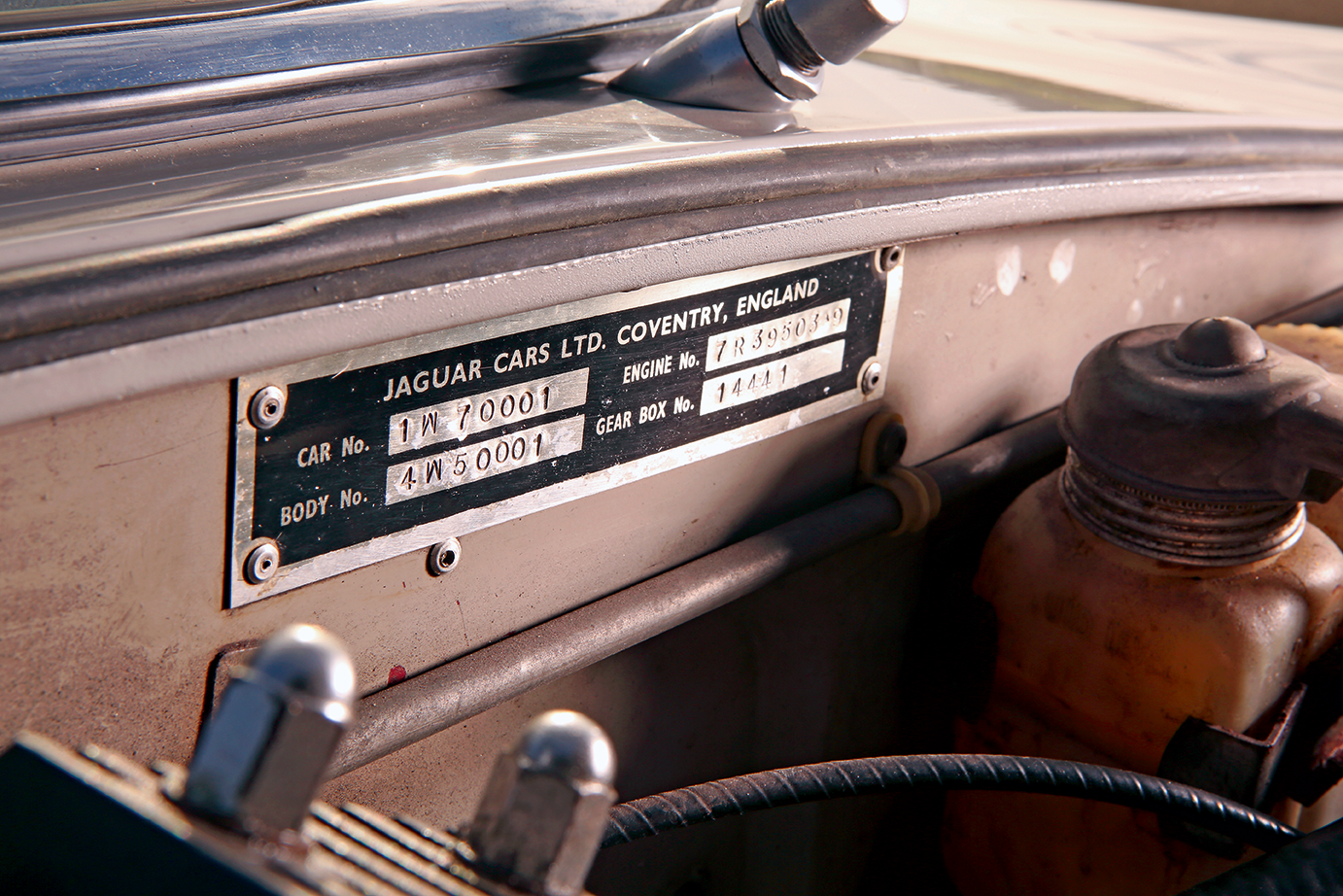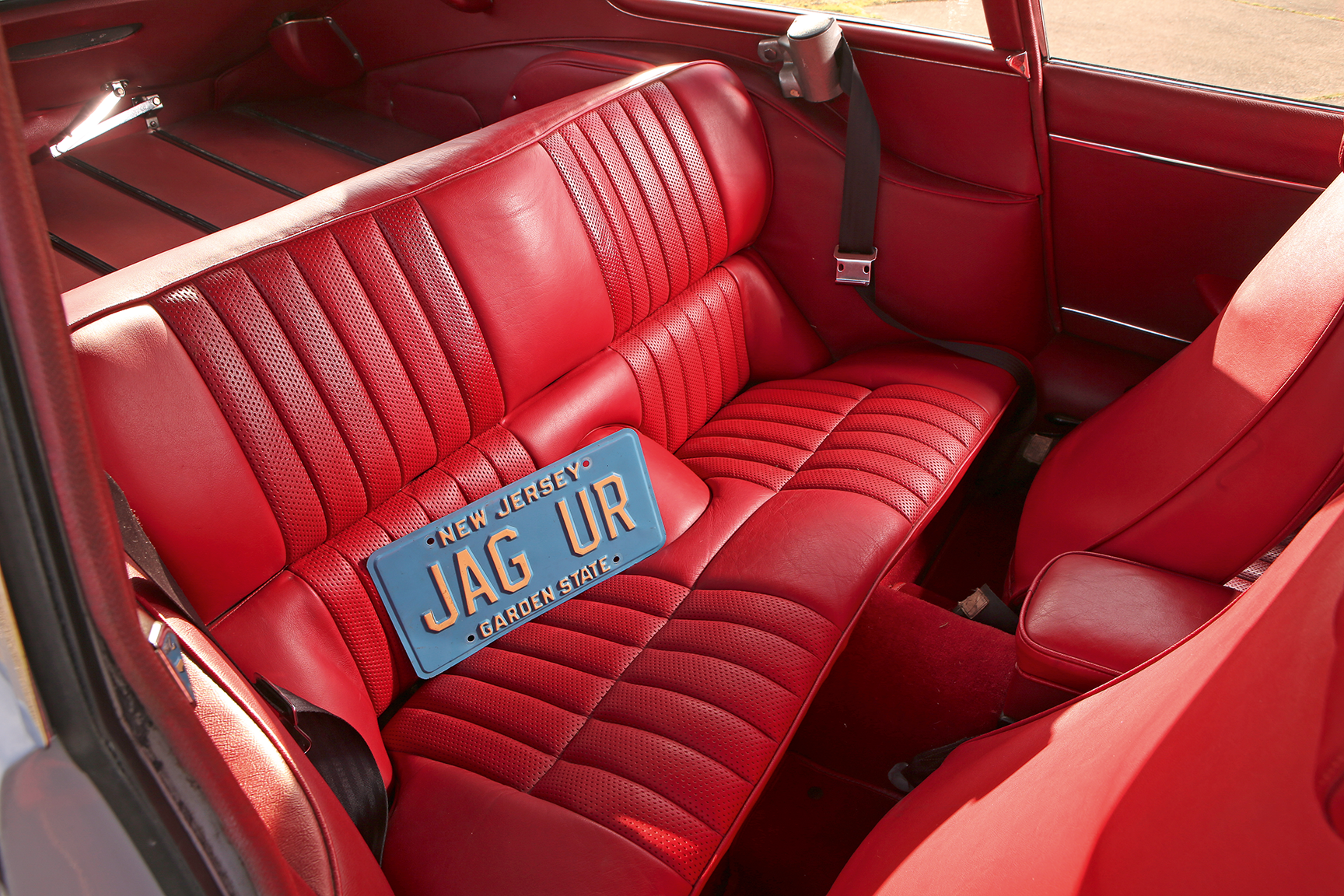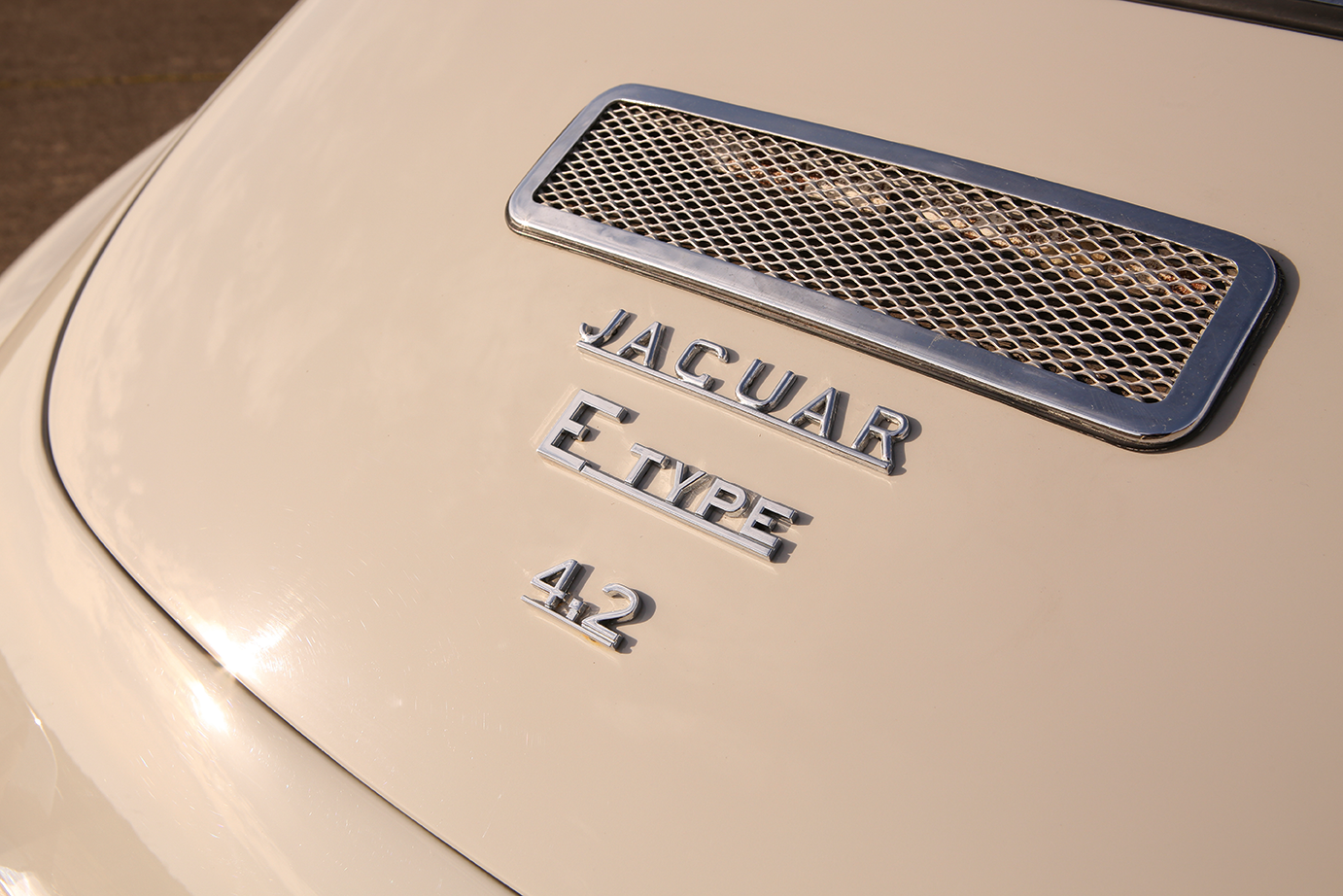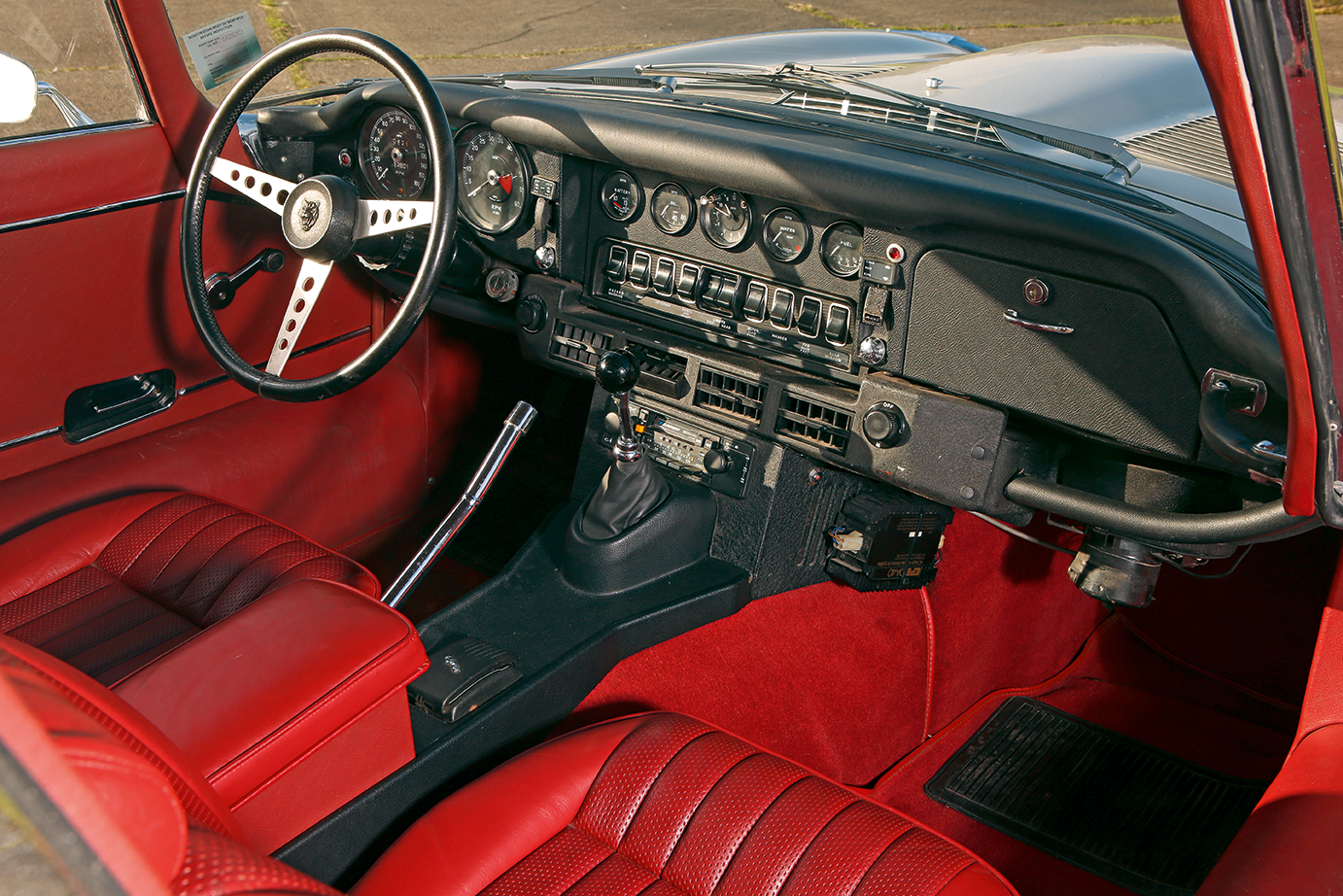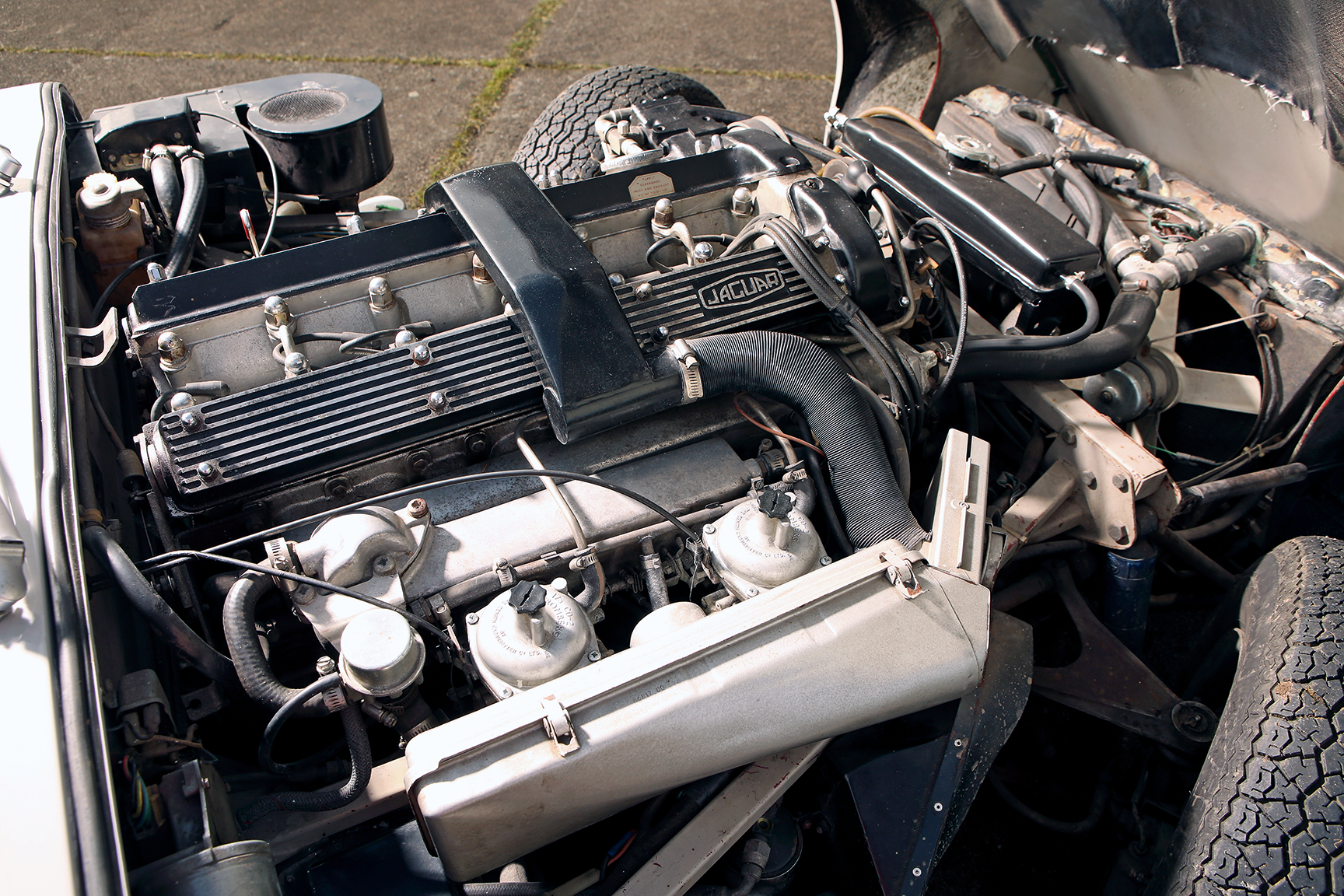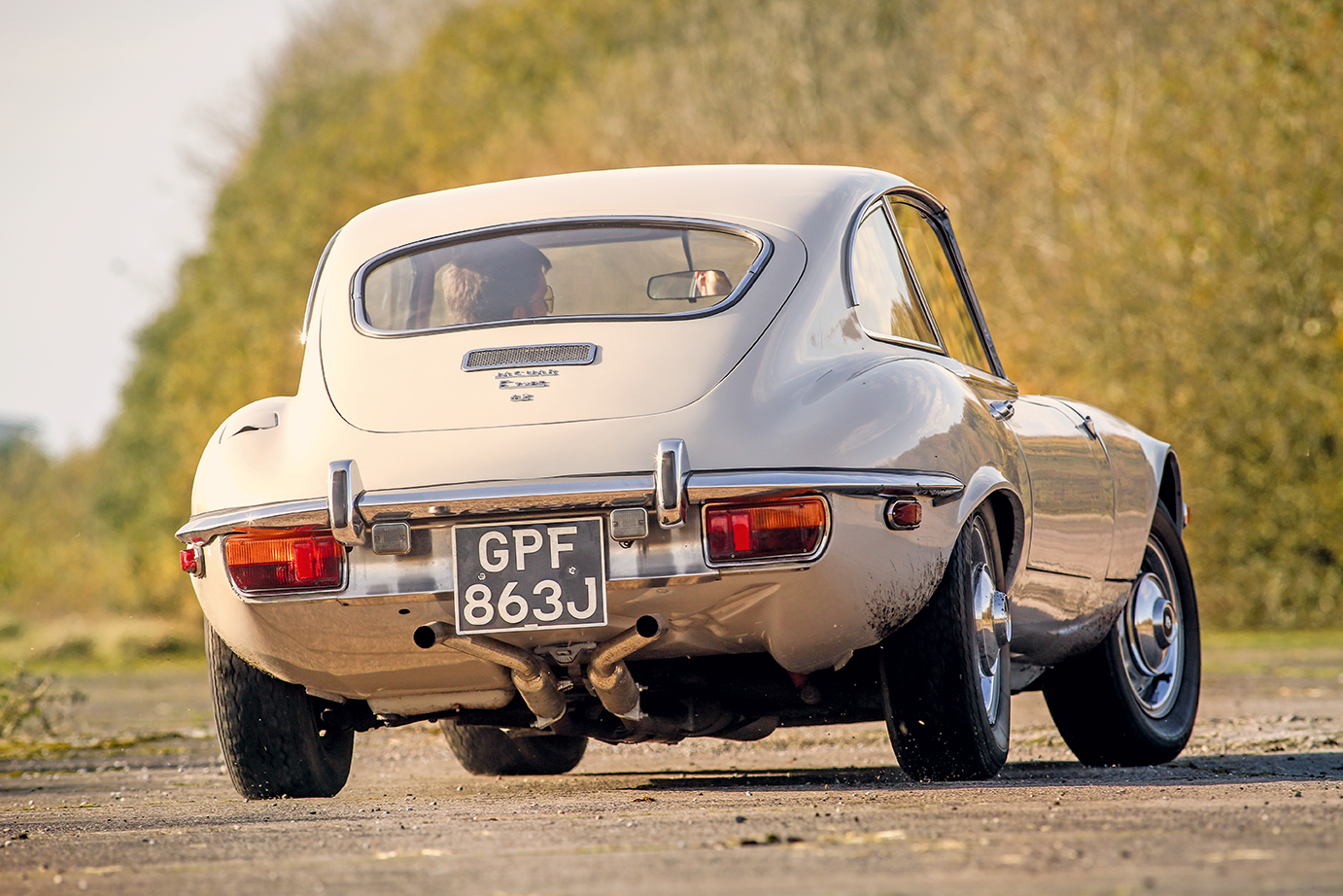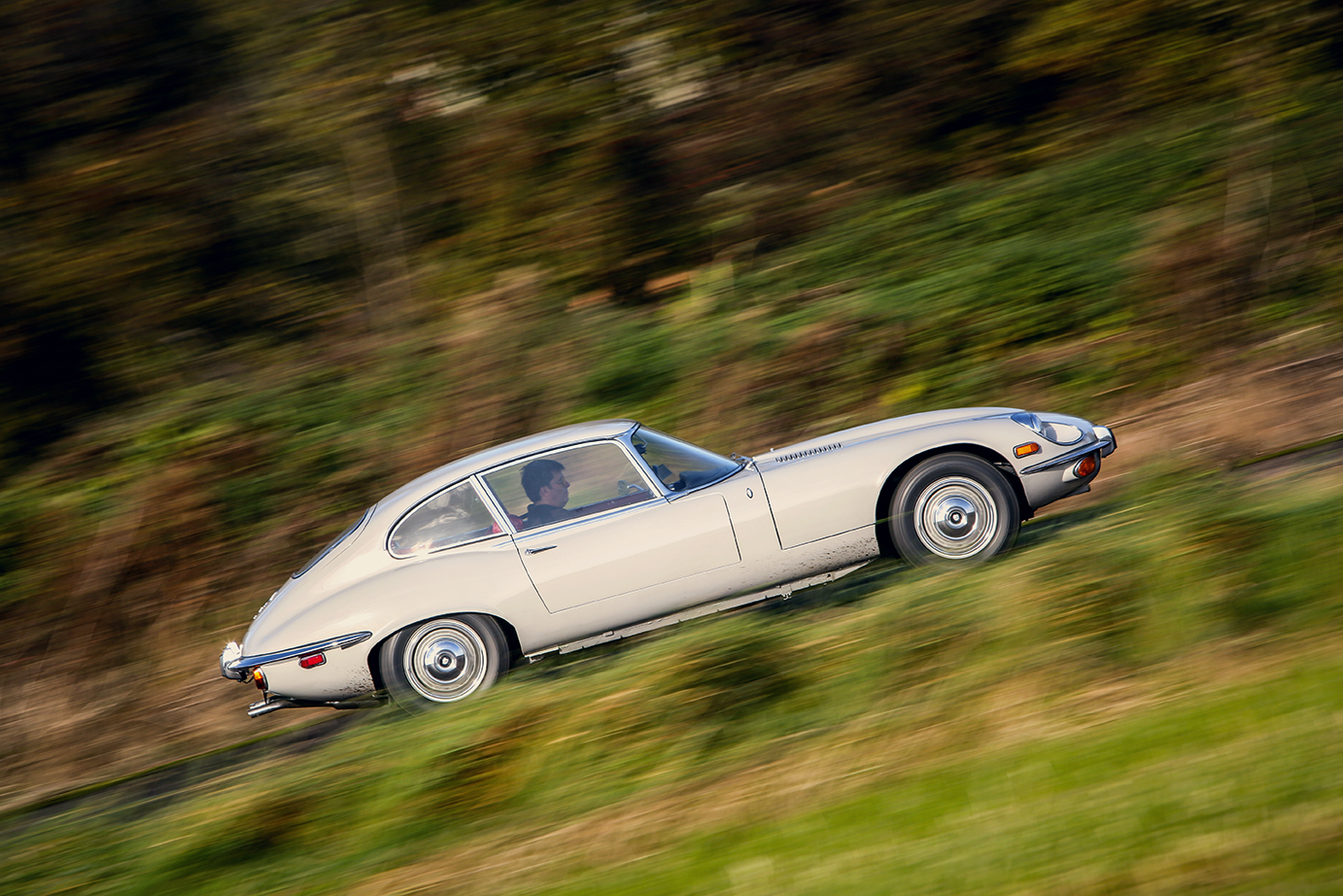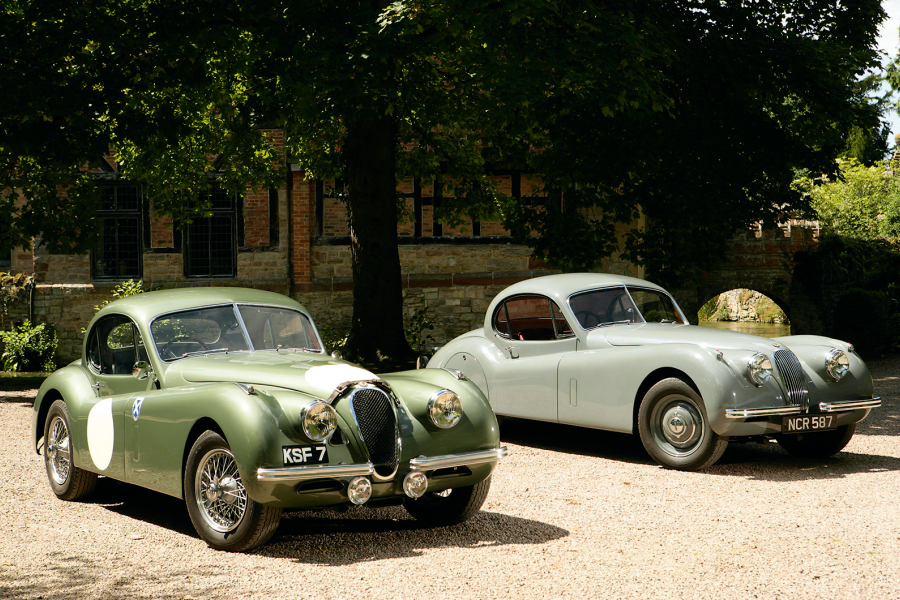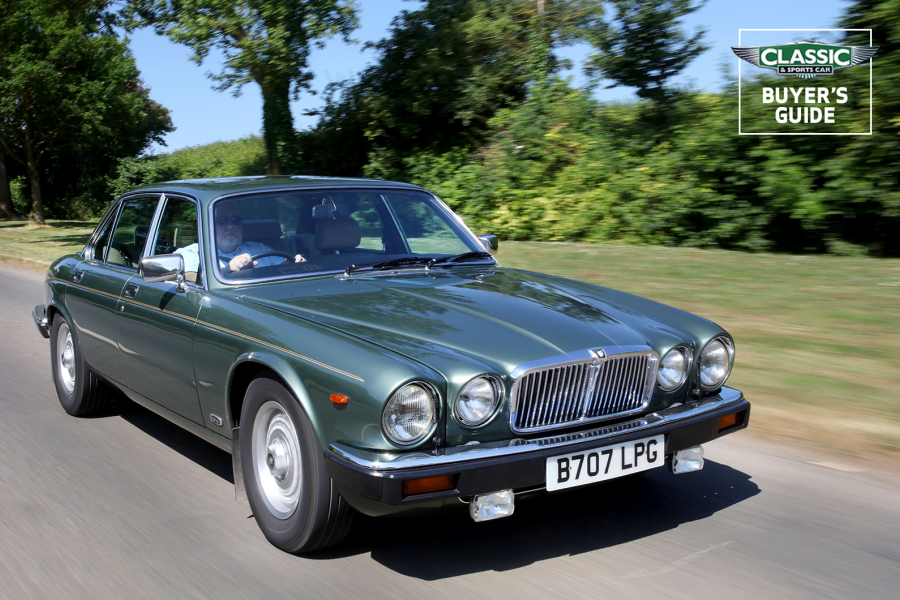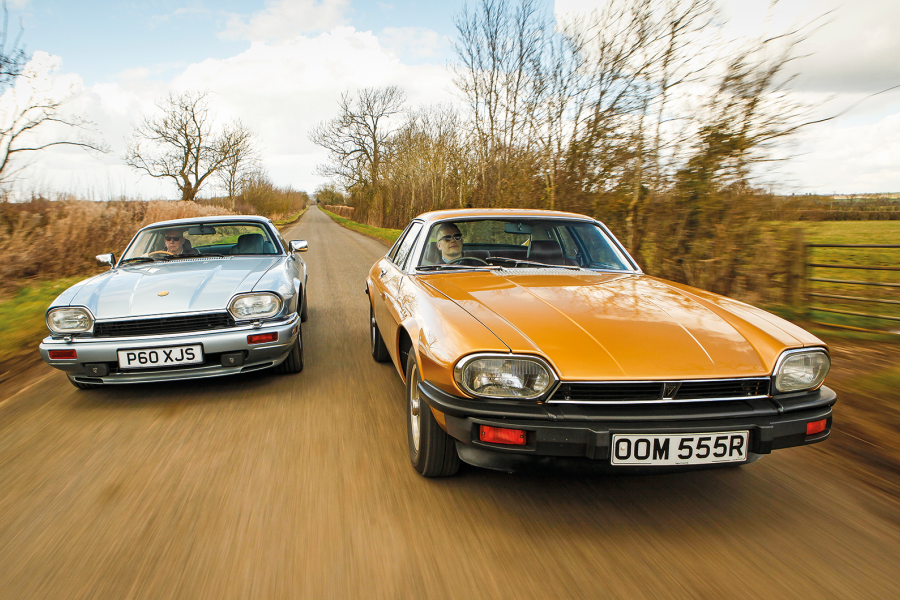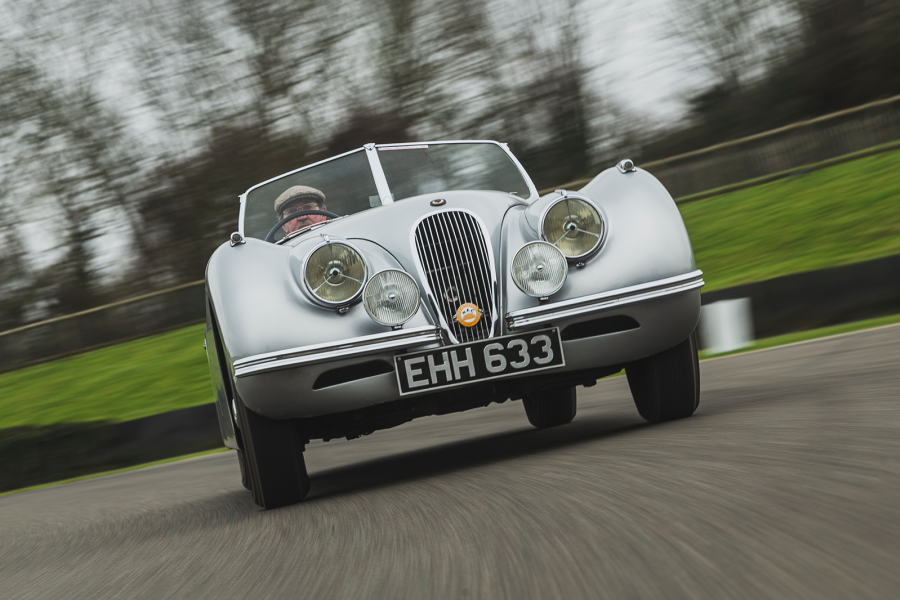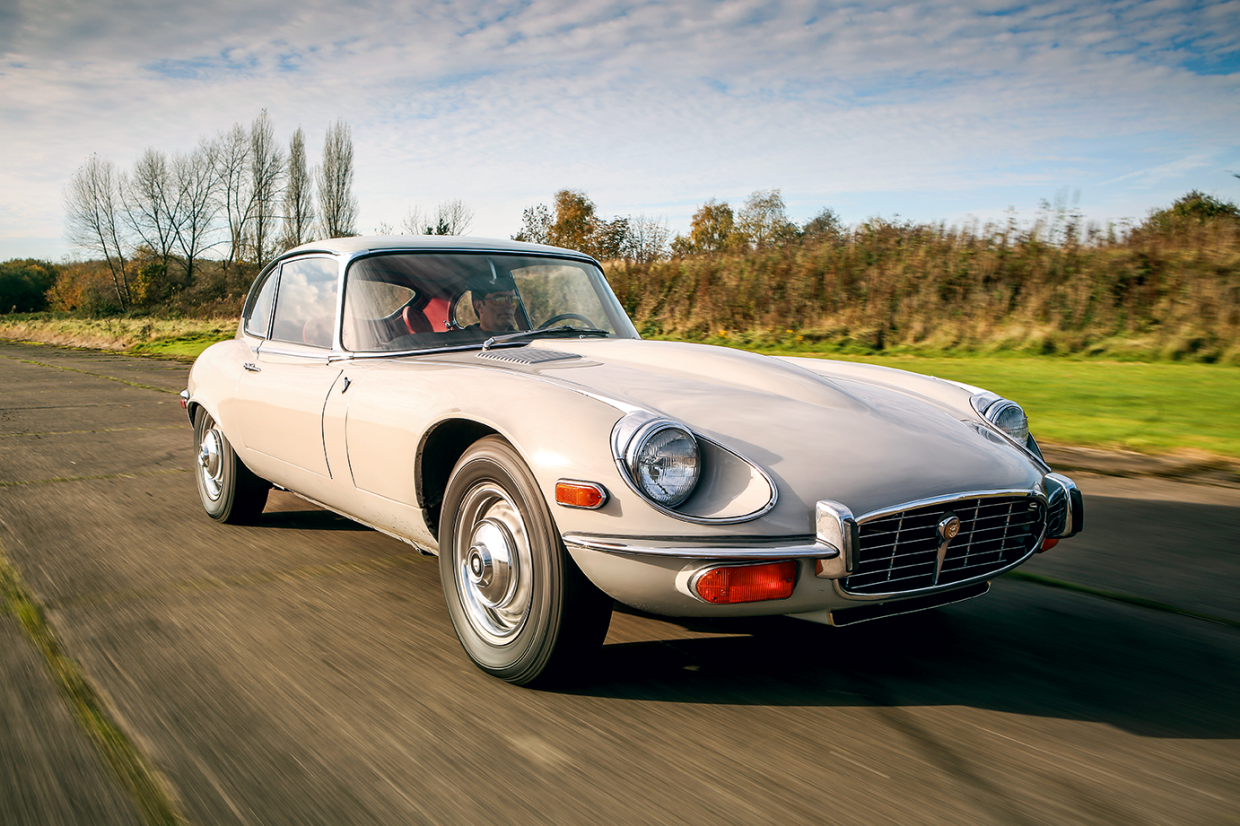
Now, this is strange. It’s a Series 3 E-type all right – softer, like the two-door XJ that it wants to be, power steering and all, but with a hidden surprise.
Instead of the turbine smoothness and near silence of the aluminium V12 that you expect, it delivers the more raucous clamour of the earlier model: sure enough, under the bonnet is an XK straight-six. What manner of cross-pollination is going on here?
When Jaguar redesigned the E-type to accept the new 5.3-litre V12, updating the styling in the process, a few development cars were fitted with the straight-six, carried over from the Series 2. It’s thought that about half a dozen were built, starting in 1969 though the first couple by all accounts were modified S2s. But this carries chassis number 1… even though it didn’t come into existence until August ’71.
It is the famous ‘Ghost’ E-type, the first and only left-hand-drive 4.2-litre S3 2+2 built. And, rather than being lost in America as the 1986 New Jersey windscreen sticker might have us believe, it’s been hiding in Cheshire for the best part of the past 30 years.
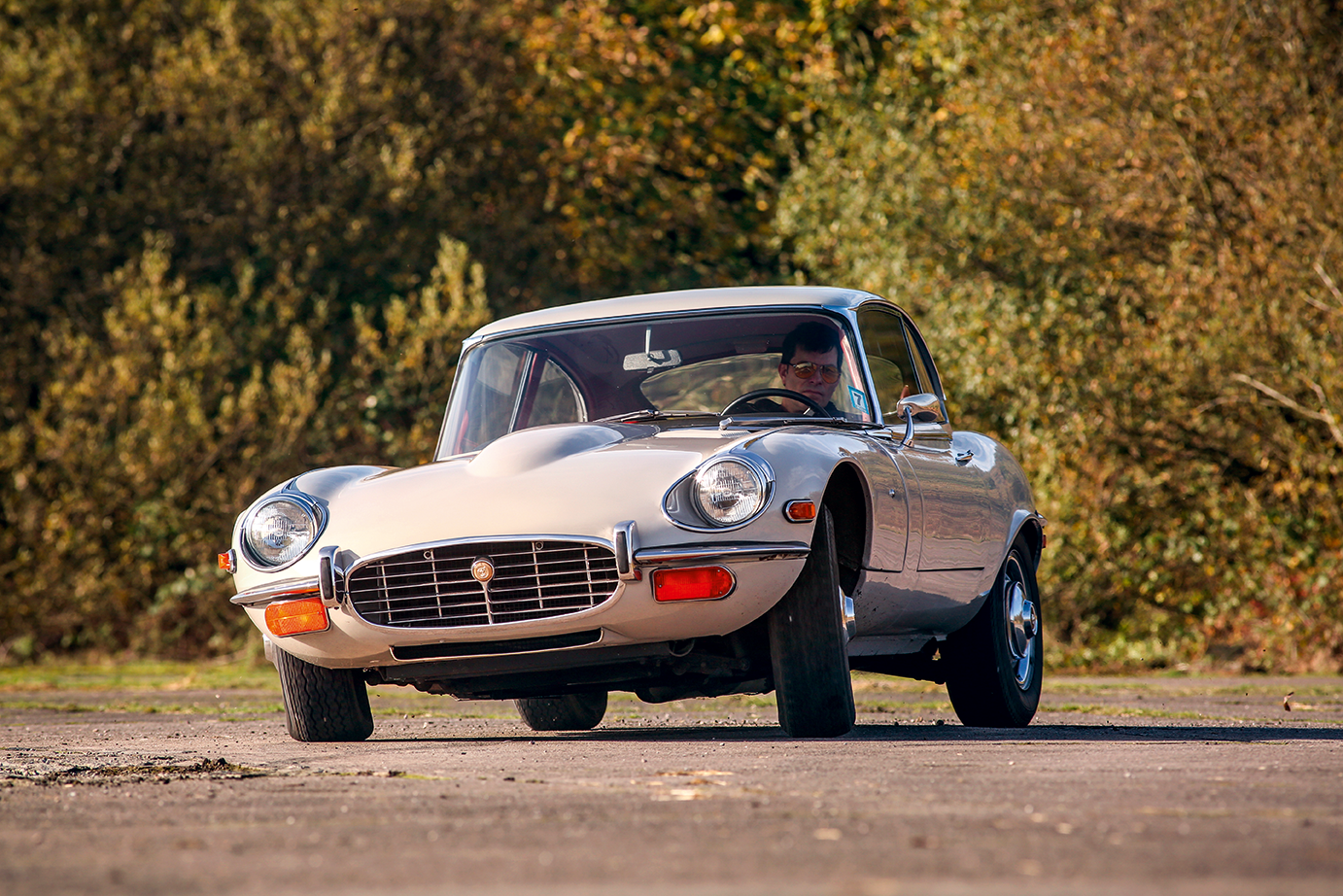
It leans on aged P5 tyres

